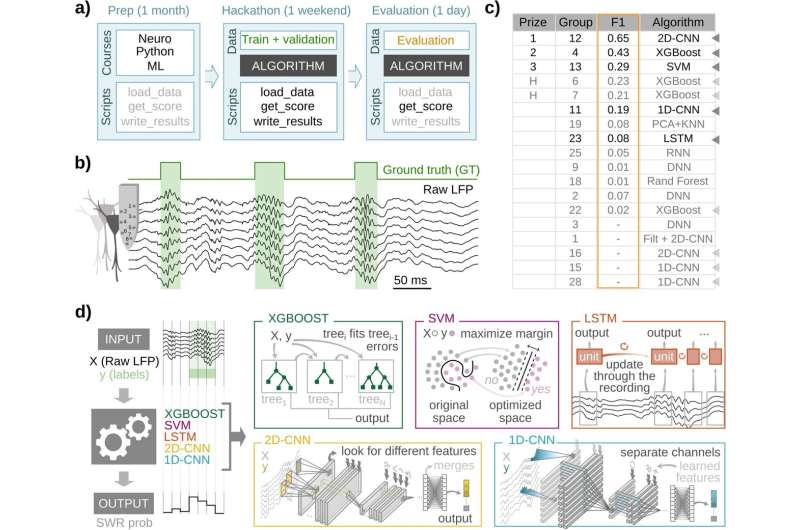This article has been reviewed according to Science X's editorial process and policies. Editors have highlighted the following attributes while ensuring the content's credibility:
fact-checked
peer-reviewed publication
trusted source
proofread
Scientists train a bank of AI models to identify patterns of brain activity that signal memory formation

The study of brain oscillations has advanced our understanding of brain function. Ripples are a type of fast oscillation underlying the organization of memories. They are affected in neurological disorders such as epilepsy and Alzheimer's. For this reason, they are considered an electroencephalographic (EEG) biomarker. However, ripples exhibit various waveforms and properties that can be missed by standard spectral methods.
Recently, the neuroscience community called for the need to better automate, harmonize, and improve the detection of ripples across a range of tasks and species. In the study, the authors used recordings obtained in laboratory mice to train a toolbox of machine learning models.
"We have tested the ability of these models using data from non-human primates that were collected at Vanderbilt University (Nashville, U.S.) by Saman Abbaspoor and lab leader Kari Hoffman as part of the Brain Initiative. We found that it is possible to use rodent EEG data to train AI algorithms that can be applied to data from primates and possibly humans, provided the same type of recording techniques are used," explains De la Prida, who is part of the CSIC's AI-HUB connection aimed at advancing the use of AI and its applications.
The model toolbox emerged as a result of a hackathon, which resulted in a short list for the best detection models. These architectures were then harmonized and optimized by the authors, who now provide all codes and data openly to the research community. Models include some of the best-known supervised learning architectures, such as support vector machines, decision trees, and convolutional neural networks.
"We have identified more than one hundred possible models from the different architectures that are now available for application or retraining by other researchers," say Andrea Navas Olivé and Adrián Rubio, who are the first authors of the work.
"This bank of AI models will provide new applications in the field of neurotechnologies and can be useful for detection and analysis of high-frequency oscillations in pathologies such as epilepsy, where they are considered clinical markers," concludes De la Prida.
The paper is published in the journal Communications Biology.
More information: Andrea Navas-Olive et al, A machine learning toolbox for the analysis of sharp-wave ripples reveals common waveform features across species, Communications Biology (2024). DOI: 10.1038/s42003-024-05871-w



















